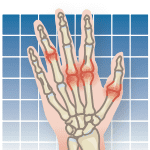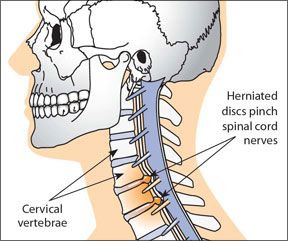Neck pain can be acute, lasting from a few hours to a few weeks, or chronic, lasting for several weeks or longer. Fortunately, both types usually are not serious and often can be treated with conservative measures, says Tagreed M. Khalaf, MD, a staff member at Cleveland Clinics Center for Spine Health. Your neck-the cervical spine-is made up of seven bony vertebrae that run from the base of the skull to just below the shoulder blades. Seven shock-absorbing discs, muscles, and ligaments hold these vertebrae in place. The spinal cord, which sends nerve impulses to all parts of the body, runs through an opening in the cervical vertebrae and continues all the way down the spine; it also sends nerves down the arms. Therefore, a problem in the neck can cause pain in the neck itself, in the upper back, as well as the shoulders and arms. The first step in dealing with the pain associated with a neck problem is to have an evaluation performed to rule out a serious cause. Generally, your doctor will do a physical exam and take a neck X-ray. In some cases, additional tests-a computed tomography (CT) scan, a magnetic resonance imaging (MRI) scan, or a nerve test called an electromyogram (EMG)-may be needed.
To continue reading this article or issue you must be a paid subscriber.
Sign in






























